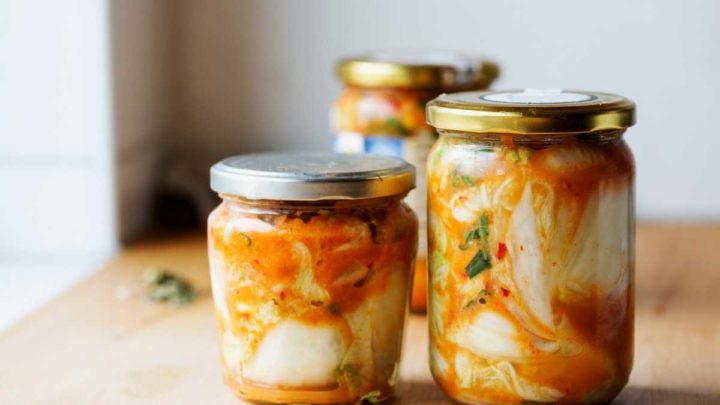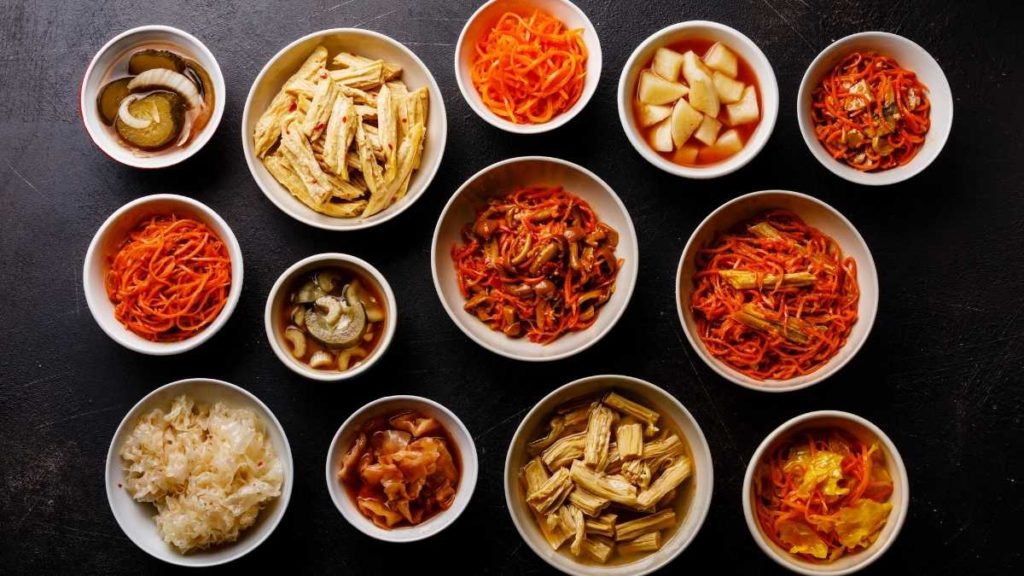A staple in every Korean household, kimchi is a traditional Korean dish that’s served with almost every meal. It can be served as a side dish or eaten on its own. Kimchi can also be used as an ingredient in a number of dishes, like kimchi jjigae.
Kimchi recipes most commonly use Napa cabbage, salt, garlic, ginger, chili peppers, and fish sauce. Depending on the region and season, the recipes can vary.
We can get a sense of kimchi’s flavors by looking at its ingredients. What does kimchi taste like, though? Kimchi has a complex flavor profile because it blends sour, umami, and spicy flavors.
Kimchi is said to go with Oysters – – but what is the true taste of an oyster?
There is no MSG in Kimchi – see what MSG tastes like.
What Does Kimchi Taste Like?
For those who are unfamiliar with fermented food, trying kimchi for the first time can be quite the experience.
Kimchi can be pungent and sour tasting, but its flavors don’t just stop at sour. Kimchi can be sweet, umami, and spicy. So, after your taste buds go through the initial shock, you’ll find that kimchi’s complex flavors are quite enjoyable.
Sour
The first thing that most people notice when they taste kimchi is its sour flavor. This tangy, quite sour taste is the result of the fermentation process. People familiar with sauerkraut may not be bothered by kimchi’s taste since both dishes get their sourness from the fermentation process.
During kimchi fermentation, bacteria breaks down the sugar in the raw ingredients and releases lactic acid. This is what gives kimchi its pungent smell and sour taste. It takes kimchi to ripen from a few hours to days depending on the fermentation process.
It goes without saying that the longer kimchi ferments, the more sour it can become. Fermenting kimchi the traditional way brings out the most of its flavors, including sourness.

Umami
In most kimchi recipes, fish is a common ingredient. It can be added in the form of fish sauce, paste, or anchovies. In kimchi, these fish products bring out a strong umami flavor, which is a mouthwatering savory taste found naturally in foods like meat and fish.
This umami flavor doesn’t just blend with the other flavors in kimchi. It also deepens them, giving them an elevated savory deliciousness.
Some kimchi recipes forgo fish products. This gives it a more light and fresh taste, especially if the kimchi is made with cucumbers or radishes.
Spicy
Hot pepper flakes are a common ingredient in kimchi recipes. They’re what gives kimchi its spiciness and vibrant, red color.
Depending on how much chili peppers are used, kimchi’s heat level can range from mildly spicy to extremely spicy.
Sweet and Salty
Both sugar and salt are used in kimchi recipes. The amount of sugar and salt used in kimchi is a matter of preference. Some recipes are sweeter and less salty. Other recipes can be saltier and less sweet.
Garlicky
Garlic has a unique flavor profile; it’s pungent and mustard-like, bordering on spicy. As it ferments in kimchi, the garlic’s flavor intensifies, releasing a thrilling spicy flavor.

Many Different Types Of Kimchi 
What is kimchi similar to
Is kimchi a side dish or main dish
Kimchi is usually a side dish that is eaten with the a main dish. If you really love it then you can have as a main dish with some rice or other condiments. It can be eaten as an appetizer or a snack, on its own. Kimchi has been around for thousands of years in Korea but it was only recently that the rest of the world started eating this delicious food.
In Korean culture, there are many different types of kimchi depending on what region you’re from.
Is kimchi an acquired taste
But does everyone love kimchi? Not necessarily. Some people find it too spicy or sour. Others simply don’t care for its flavor. So really kimchi is definitely an acquired taste.
What is kimchi similar to?
Kimchi is a traditional Korean dish that has been around for centuries. It is a fermented food that is packed full of nutrients and health benefits. Kimchi is similar to sauerkraut, pickle, chow mein, and kim chee.
Kimchi is a staple in Korean cuisine and is often served at meals. It is usually eaten with rice or noodles. The main ingredients of kimchi are cabbage, garlic, ginger, scallions, red pepper, and salt.
Kimchi is an excellent source of vitamins A, C, K, B6, and E. It also contains calcium, iron, magnesium, phosphorus, potassium, zinc, copper, manganese, selenium, and vitamin D.